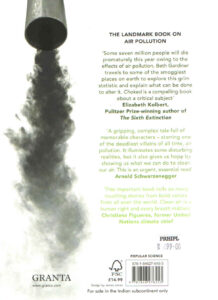Choked: The Age of Air Pollution and the Fight for a Cleaner Future
By Beth Gardiner
Every year, air pollution prematurely kills seven million people around the world, in rich countries and in poorer ones. It is strongly linked to strokes, heart attacks, many kinds of cancer, premature birth and dementia, among other ailments.
In Choked, Beth Gardiner travels the world to meet the scientists who have transformed our understanding of pollutions effects on the human body, and to trace the economic forces and political decisions that have allowed it to remain at life-threatening levels. But she also focuses on real-world solutions, and on inspiring stories of people fighting for a healthier future. Compellingly written, and alive with the personalities of the people who study, breathe and fight bad air, Choked is a vital contribution on one of the most important – but too often ignored – issues of our time.
THE LANDMARK BOOK ON AIR POLLUTION
‘Some seven million people will die prematurely this year owing to the effects of air pollution. Beth Gardiner travels to some of the smoggiest places on earth to explore this grim statistic and explain what can be done to alter it. Choked is a compelling book about a critical subject.’
Elizabeth Kolbert. Pulitzer Prize-winning author of The Sixth Extinction
‘A gripping, complex tale full of memorable characters – starring one of the deadliest villains of all time, air pollution. It illuminates some disturbing realities, but it also gives us hope by showing us what we can do to clean our air. This is an urgent, essential read.’
Arnold Schwarzenegger
‘This important book tells so many touching stories from bold voices from all over the world. Clean air is a human right and every breath matters.’
Christiana Figueres, former United Nations climate chief
Book Review
Diesel fumes in London, smog in Indian and Chinese cities … a global survey of air pollution explores the fight for a cleaner future
Caspar Henderson: Guardian
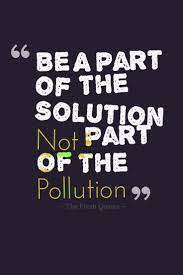 Ambient air pollution, like smoking, can seldom be definitively linked to individual cases of debility or premature death, but it greatly increases the risks. In Choked, Beth Gardiner reports that it cuts short about 7 million lives worldwide every year. Recent research suggests the actual number is closer to 9 million, or roughly one in nine of all deaths. Whatever the precise figure, air pollution – principally nitrogen oxides and tiny particles known as PM2.5 – kills more people than smoking, and more than Aids, diabetes and traffic accidents combined. Over 40% of Americans and an astonishing 95% of people worldwide breathe polluted air every day. A new study finds that in south Asia, children can expect to have their lives cut short by 30 months, and in sub-Saharan Africa by 24 months. It reduces average life expectancy in Britain by a year and a half and in Germany by over two years. Across Europe it kills more than 15 times as many people as car crashes. Many who do not die as a result of air pollution struggle with its effects on their hearts, lungs and brains. New findings have even linked it to psychotic experiences in young people.
Ambient air pollution, like smoking, can seldom be definitively linked to individual cases of debility or premature death, but it greatly increases the risks. In Choked, Beth Gardiner reports that it cuts short about 7 million lives worldwide every year. Recent research suggests the actual number is closer to 9 million, or roughly one in nine of all deaths. Whatever the precise figure, air pollution – principally nitrogen oxides and tiny particles known as PM2.5 – kills more people than smoking, and more than Aids, diabetes and traffic accidents combined. Over 40% of Americans and an astonishing 95% of people worldwide breathe polluted air every day. A new study finds that in south Asia, children can expect to have their lives cut short by 30 months, and in sub-Saharan Africa by 24 months. It reduces average life expectancy in Britain by a year and a half and in Germany by over two years. Across Europe it kills more than 15 times as many people as car crashes. Many who do not die as a result of air pollution struggle with its effects on their hearts, lungs and brains. New findings have even linked it to psychotic experiences in young people.
Gardiner, an American journalist living in London with her British husband and their young daughter, found herself made deeply ill at ease by the “stew” of diesel fumes in her adopted city, and set out to discover what is Travelling to India, China, the US, Malawi, Poland and Germany as well as investigating her own neighbourhood, she meets some of those suffering from air pollution’s effects. She speaks to researchers, regulators, campaigners and others who, over years and decades, have tried, and sometimes succeeded, in improving conditions, as well as some who believe attempts to regulate or restrict emissions are often misconceived.
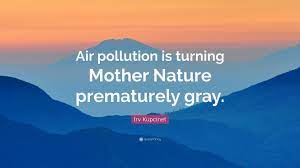 “Invisibility,” Gardiner notes, “is a strange feature of this crisis.” As an environmentalist in Los Angeles puts it to her: “You see one person run over in the street and you’ll never forget it, but thousands dying from the effects of dirty air will never even faze you.” It is only through the careful application of statistical techniques that the impact has become apparent. Landmark research such as the Children’s Health Study in California found in 2004 that children breathing the dirtiest air were nearly five times as likely to experience 20% weaker lung function, and that for every 100 children who grew up with the worst pollution at least six would be burdened with lifelong health problems.
“Invisibility,” Gardiner notes, “is a strange feature of this crisis.” As an environmentalist in Los Angeles puts it to her: “You see one person run over in the street and you’ll never forget it, but thousands dying from the effects of dirty air will never even faze you.” It is only through the careful application of statistical techniques that the impact has become apparent. Landmark research such as the Children’s Health Study in California found in 2004 that children breathing the dirtiest air were nearly five times as likely to experience 20% weaker lung function, and that for every 100 children who grew up with the worst pollution at least six would be burdened with lifelong health problems.
Gardiner examines some of the greatest missteps, such as Europe’s switch to diesel engines for private cars in the 1990s
Gardiner is nuanced but sharp in her judgments. She is concerned with the particularities of real lives as well as the particulates that often blight them. You couldn’t ask for a better guide for non-specialists and concerned citizens. Choked contains an especially interesting account of the US Clean Air Act of 1970, which remains one of the most important pieces of environmental legislation passed anywhere. It is a key reason why many Americans breathe air that, while still often dirty and dangerous, is much lower in pollutants directly injurious to health than it was in the past, and typically cleaner than the air that most Europeans breathe. Americans emit more carbon dioxide per head, but this is not directly toxic. Central to the success of the act is the idea that human health should come before company profits. No less remarkable from a contemporary perspective is that, at inception, the act received near universal assent from both Republicans and Democrats. That consensus was shortlived, however. The Trump administration’s efforts to unravel pollution controls are only one episode in a decades-long battle.
Gardiner also examines some of the greatest missteps, notably Europe’s large-scale switch to diesel engines for private cars in the 1990s. This was undertaken in the belief it would help reduce emissions of carbon dioxide, which it largely failed to do. Instead it has exposed millions of people to higher levels of nitrogen dioxide, a dangerous pollutant. Choked lays out in shocking detail how Volkswagen and other manufacturers got away with concealing the truth about illegal emissions from their vehicles for so long. But car manufacturers alone are not to blame for the terrible state of air in much of Europe. Gardiner considers London, and writes: “Instead of trying to solve the problem, David Cameron’s government, then Theresa May’s, put their energy into fighting off lawsuits demanding a serious pollution strategy, and seeking extensions to EU air quality mandates. As mayor, Boris Johnson delayed and diluted his predecessor’s more aggressive cleanup plans, and even sprayed dust suppressants near pollution monitors to artificially lower readings.” The government, however, launched an ambitious Clean Air Strategy in January, and Sadiq Khan, the current mayor, is overseeing the introduction of the Ultra Low Emission Zone on Monday.
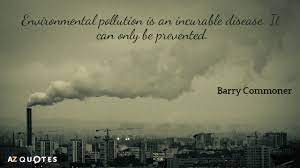 But Gardiner contrasts London’s record with that of Berlin, where the increasing availability of attractive, affordable and readily available alternatives to passenger cars has delivered substantial improvements in transport connectivity, quality of life and health.
But Gardiner contrasts London’s record with that of Berlin, where the increasing availability of attractive, affordable and readily available alternatives to passenger cars has delivered substantial improvements in transport connectivity, quality of life and health.
Air pollution is less severe in parts of China than a few years ago, but current global trends suggest a grim future
In a lively report from Delhi, a megacity with perhaps the dirtiest air of all, she shows how, after initial success in the early 2000s with the introduction of compressed natural gas for motor vehicles, Indian authorities have repeatedly struggled and failed to tackle air pollution that is now at crisis levels. Some measures have penalised the poor and vulnerable without substantially reducing emissions. Meanwhile, emissions from coal-fired power plants persist almost unchecked.
The biggest sources of dangerous air pollution in rural India and in large parts of Africa, however, are the simple household fires on which people cook their meals. Fuelled by “biomass” such as wood, brush and cow dung, these are responsible for nearly 4 million deaths a year. Women and girls, who do most of the cooking, are disproportionately affected – something Gardiner witnesses firsthand. In Malawi, pneumonia, often caused by cooking fires, is the single biggest killer of children under five. The good news is that technical solutions such as electromagnetic induction stoves that can be charged by solar panels are looking increasingly affordable.
China’s economic miracle has come at a price of an “airpocalypse”, with many cities shrouded in poisonous smog for much of the year. Gardiner’s report of attempts to tackle the challenges includes both a warning and an inspiring example. The warning concerns the case of Chai Jing, a journalist from China Central Television who made a documentary about the crisis. More than 200 million people watched Under the Dome within days of its online release in 2015 – a big audience even for China. There is little question that central government recognised the importance of the issues addressed in the film (which can be found with subtitles on YouTube), but Chai appears to have made an unforgivable mistake by making it without official approval. Gardiner tries to track down a woman who in any other country would be a celebrity, but Chai has disappeared without trace. The inspiring example is that, thanks to such environmental activists as Ma Jun, data on air and water pollution levels at critical sites across China is freely available online to everybody in real time. Nothing like this exists elsewhere, and, in a country where the government increasingly uses information technology to control its citizens, Ma is doggedly hopeful. “The moment … you give people the truth there’s no way for you to backtrack,” he tells Gardiner.
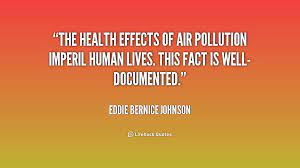 Air pollution is less severe in parts of China than it was a few years ago, but current global trends suggest a grim future. As David Wallace Wells notes in his recent book The Uninhabitable Earth, climate change this century could increase the number of excess premature deaths from air pollution alone more than 15 fold. Yet Gardiner remains guardedly optimistic. With the precedent of values-based legislation such as the Clean Air Act, and mobilisation for the Green New Deal in the US, a shift away from fossil fuels that poison our bodies and wreck our planet is possible. “While it can be difficult to imagine” a better world than the one we know, she concludes, “it is within our reach”.
Air pollution is less severe in parts of China than it was a few years ago, but current global trends suggest a grim future. As David Wallace Wells notes in his recent book The Uninhabitable Earth, climate change this century could increase the number of excess premature deaths from air pollution alone more than 15 fold. Yet Gardiner remains guardedly optimistic. With the precedent of values-based legislation such as the Clean Air Act, and mobilisation for the Green New Deal in the US, a shift away from fossil fuels that poison our bodies and wreck our planet is possible. “While it can be difficult to imagine” a better world than the one we know, she concludes, “it is within our reach”.
Prologue
Inhale
The Meaning Of A Breath
The Meaning Of A Breath
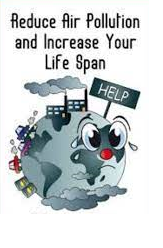
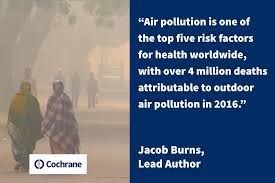 A human breath begins in the deepest reaches of the brain, where – far beneath consciousness – the body’s most basic and essential functions are regulated. Just above the point where the spine meets the skull, tiny receptors detect rising levels of carbon dioxide, then stimulate nearby clumps of neurons. Between 12 and 20 times a minute, perhaps 20,000 times a day, millions of times a year, over and over and over again from the first cry of birth until the very last moment of life, these neurons fire signals ordering the muscles of the diaphragm and rib cage to contract.
A human breath begins in the deepest reaches of the brain, where – far beneath consciousness – the body’s most basic and essential functions are regulated. Just above the point where the spine meets the skull, tiny receptors detect rising levels of carbon dioxide, then stimulate nearby clumps of neurons. Between 12 and 20 times a minute, perhaps 20,000 times a day, millions of times a year, over and over and over again from the first cry of birth until the very last moment of life, these neurons fire signals ordering the muscles of the diaphragm and rib cage to contract.
Message received, the dome-shaped diaphragm flattens, and the ribs move upward and out. As the chest cavity expands, the pressure within drops, drawing air through the nose and the mouth. Down the back of the throat, over the voice box, it follows its path deeper and deeper into the body..
To the naked eye, the lungs are remarkable hunks of spongy pink tissue. Only when they inflate, puffing up like balloons, but faster and more dramatically, does their uniqueness become apparent. In the stylized illustrations of medical books, a lung looks like and upside-down tree, a symmetrical maze whose branches get smaller and smaller as they divide into more than a million tiny twigs.
It’s up close that the structure’s elegant intricacy comes into focus. Hunched over his microscope, the seventeenth-century Italian anatomist Marcello Malphighi was the first to get a glimpse. Until then, the best medical minds believed that air mixed directly with the blood inside the lung. What Malphighi discovered is now a biological commonplace, taught to middle schoolers: Inhaled air fills sacs that cluster at the airways’ ends like miniature bunches of grapes. There are some 300 million of these aevioli in a pair of lungs, and their surface area is often likened, in total, to the size of a tennis court. Separated from them by membranes one one-hundredth as thick as a hair, tiny capillaries carry blood low in oxygen and laden with carbon dioxide. The gases rush across the barrier, and oxygen molecules bind to haemoglobin, then whoosh towards the heart, ready to be delivered wherever they are needed.
Like so much about the body, a breath is at once astonishingly simple and magnificently complex, delicately balanced yet highly resilient. Unlike other essential functions, the beating of the heart or the peristalsis of digestion, breath can also be controlled by the conscious mind, when we laugh or speak or hold it to dive underwater.

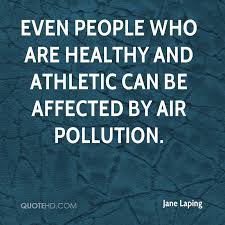 The lung, too, is a point of vulnerability. While it has its defences – the mucus that traps some contaminants, the hair like cilia that sweep away others – this is the place where the outside world makes its way into the very center of the body, barriers left far behind as the air and whatever it carries come within a whisper of the bloodstream.
The lung, too, is a point of vulnerability. While it has its defences – the mucus that traps some contaminants, the hair like cilia that sweep away others – this is the place where the outside world makes its way into the very center of the body, barriers left far behind as the air and whatever it carries come within a whisper of the bloodstream.
Lacking microscopes and an understanding of air’s composition, the ancients struggled to grasp the hows and whys of a function they could plainly see was essential. Aristotle, a physician’s son, believed breathing released heat generated by the vital fires of the soul. It would take millennia to definitely correct such misconceptions, but there was one fact the philosopher and his contemporaries understood well: Our very existence depends upon air. “The last act when life comes to close is the letting out of the breath,” wrote Aristotle. “And hence, its admission must have been the beginning.
I didn’t think much about the meaning or mechanics of breath when I was growing up. Until I was five, I lived in Fort lee, New Jersey, in an apartment building overlooking the entrance to the George Washington Bridge. It was, and still is, a notorious traffic choke point, where the new Jersey Turnpike and a tangle of other highways merge into one. Suburbanites commuting to offices in New York sit bumper to bumper with trucks rolling along the I_95 East Coast corridor, waiting to cross into the city. This was the early 1970s, the dawn of environmental consciousness, a time when American cars were exponentially dirtier than today, their fuel tainted with lead, sulphur and other dangerous toxins. Along with my peers – the Jennifers, Davids, and Lisas who lived in the building too – I breathed it all in as we ran and jumped in the concrete playground out back.
Years later, in my twenties, I watched crosstown buses luch by a few stories below my Manhattan apartment, heading into and out of Central Park. When I cleaned, the soot that coated the windowsill blackened big wads of paper towels. It took several goings over, and a lot of soapy spray, to get the paint on the sill white again.
At 30, I moved to London with the charming Brit who’d stolen my heart. For 18 years, more than half of them with our chatty, energetic daughter, we’ve breathed the diesel fumes that foul the city’s air. London’s pollution is just one piece of a health disaster plying out across Europe, belying the continents reputation for environmental progressivism. I can smell the exhaust when I’m out running errands, meeting a friend for coffee, or walking Anna to school, clouds of it billowing into our faces. After a few minutes on a busy road, I often have a mild headache.
For a long time, I saw that awful air as just an annoyance. But as I’ve come to understand pollution’s profound effects on the human body, its grown into something more: the focus of nagging worry, a fear for my daughters well-being, and my own.
I try my best to protect her, of course. But I can’t change the air that surrounds us, nor wish away our city’s diesel mess. So I find myself veering from anxiety to anger. Landing sometimes, too, at a willful blocking out of the danger, as a parent’s urge to shield a vulnerable child tugs against the reality of an individual’s powerlessness in the face of larger forces. It’s that back-and –forth pull of emotions that set me on the path to writing this book.
What I’ve found since is that the taint my family and I breathe is only one strand of a far bigger story. Around the world, from Fort Lee to Frankfurt, Karachi to California, dirty air causes 7 million early deaths annually, more than AIDS, diabetes and traffic accidents combined, making it the single biggest environmental threat to health. New data suggests that number may climb even higher, pushing air pollution into the very top tier of global killers. More than 40 percent of Americans breathe unhealthy levels of pollution. In Britain, air pollution is second only to smoking as a health risk, causing as many as a fifth of all deaths in my adopted hometown. Across Europe, it kills more than 15 times as many people as car crashes. Nothing is as elemental, as essential to human life, as the air we breathe. Yet around the world, in rich countries and poor ones, it is quietly poisoning us.
It’s not just the obvious ailments like asthma and bronchitis. Over the past decade and a half, scientists’ understanding of air pollution’s harms has advanced rapidly, and a powerful body of evidence now links it to a long and growing list of health woes, including heart attacks, strokes, birth defects, many kinds of cancer; dementia, diabetes, and Parkinson’s disease.
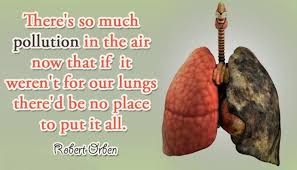
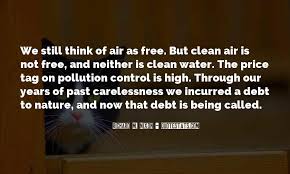 Not far from where I grew up, and many years later, researchers took advantage of the natural experiment created when highways in New Jersey and Pennsylvania replaced the old-fashioned tollbooths where we used to hand cash to an attendant or toss coins into a basket with the high-tech kind that charge the fee electronically as you zoom past. The switchover dramatically reduced backups at the collection points, and the researchers found rates of premature birth dropped by about 9percent for pregnant women within a mile and a quarter radius of where the old toll booths had been. While that change was positive, it made clear the disturbing link between the highway exhaust so many of us breathe and a pregnancy outcome that can have lifelong consequences for babies born early.
Not far from where I grew up, and many years later, researchers took advantage of the natural experiment created when highways in New Jersey and Pennsylvania replaced the old-fashioned tollbooths where we used to hand cash to an attendant or toss coins into a basket with the high-tech kind that charge the fee electronically as you zoom past. The switchover dramatically reduced backups at the collection points, and the researchers found rates of premature birth dropped by about 9percent for pregnant women within a mile and a quarter radius of where the old toll booths had been. While that change was positive, it made clear the disturbing link between the highway exhaust so many of us breathe and a pregnancy outcome that can have lifelong consequences for babies born early.
I’m lucky enough to have been in good health all my life. And when, sooner or later, illness comes along, I won’t know whether the pollution I’ve taken in over the years has anything to do with it, or if I should instead, blame my sweet tooth, my lifelong preference for a good book over a brisk run, or a malevolent gene buried somewhere in my DNA, beyond anyone’s control.
None of us can. And that invisibility is a strange feature of this crisis. “You see one person run over in the street and you’ll never forget it,” observes a Los Angeles environmentalist I met. But thousands dying from the effect of dirty air “will never even faze you.” He was right. When smokers succumb, they know their own actions, and those of the tobacco companies that fed their habit, helped bring about their illness. But, in a world powered by fossil fuels, we all travel from place to place, use electricity, heat our homes, and few of us fully grasp the effects.
The gains that come when air gets cleaner are similarly difficult to see. There’s no doubt reducing pollution saves lives. But those whose years are lengthened, and those who love them, never know it. Emergency room visits are averted and health dollars stay in pockets, but the line connecting car or power regulations with the size of medical budgets isn’t easy to make out.
Once I’d grasped the dimensions of this hiding in plain threat, I wanted to see, up close, how it was playing out around the world. And why. Is air pollution an inevitable part of modern life, something we must resign ourselves to living with? Or are there more malign forces at work, too, keeping us wedded to the old, dirty ways of doing things when better alternatives exist? And, most importantly, what would it look like to do things differently, to build a cleaner, healthier world? Has anyone done it, or tried? And how can we get from here to there?
By way of looking for answers, this book tells the story – the stories – of air pollution, and of the people I met whose lives are shaped by it. In the United States, thanks to decades of gradually tightening regulation, air is far cleaner than it once was. But that improvement – now at risk as the rules that brought it about come under assault – has failed to keep up with the science, which tells us clearly with each new study that even relatively low pollution levels do real damage. Around the world, in fast-growing South Asia and China, in Europe’s coal-burning east and its diesel-dependent west, in Cairo and Johannesburg and Lagos, the problem is much worse.
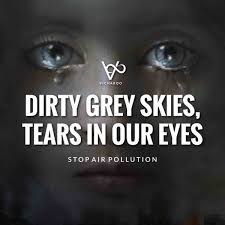
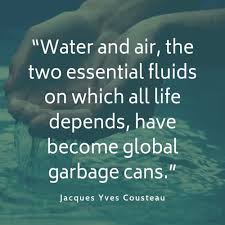 In Part 1, “Holding our Breath,” our itinerary includes Delhi, pollution’s ground zero, where a mother has nightmares about what’s happening inside her children’s lungs, and an eccentric businessman builds himself a clean-air bubble. I’ll show you around London, my window onto the consequences of Europe’s disastrous embrace of diesel. Poland’s story is the story of coal; we’ll meet men hoisting bags of it into their cars and watch an old woman trudge to the basement to scoop some into her furnace. In California’s parched and poor San Joaquim Valley, migraines and wheezing shatter preconceptions that this is just an urban problem. We see there, too, that while dirty air affects everyone who breathes it, some suffer more then others, so this issue is infused with questions of race, class, and fairness.
In Part 1, “Holding our Breath,” our itinerary includes Delhi, pollution’s ground zero, where a mother has nightmares about what’s happening inside her children’s lungs, and an eccentric businessman builds himself a clean-air bubble. I’ll show you around London, my window onto the consequences of Europe’s disastrous embrace of diesel. Poland’s story is the story of coal; we’ll meet men hoisting bags of it into their cars and watch an old woman trudge to the basement to scoop some into her furnace. In California’s parched and poor San Joaquim Valley, migraines and wheezing shatter preconceptions that this is just an urban problem. We see there, too, that while dirty air affects everyone who breathes it, some suffer more then others, so this issue is infused with questions of race, class, and fairness.
Of course, there is action and progress in the polluted places, and still plenty fouling the air of the improving ones. My hope is that these chapter’s global reach will demonstrate both the scale of the problem and the very real opportunity we have to solve it.
In many ways, this is a book about choices. About how we choose the kind of world we want to live in. And about the complexities of an age in which the things that have changed our lives for the better also bring consequences that are harder to see.
Cleaner air, it turns out, is not an impossible dream. We know how to get there, and doing so would bring enormous health benefits, on a par in some places with slashing sugar consumption or getting everybody up off the couch.
And understandings pollution’s hidden dangers holds an even greater power. The overaching challenge of our time, of course, is climate change. But despite the floods and droughts and storms, it’s risk can still feel abstract and distant, a calculus of parts per million high in the atmosphere, or glaciers melting thousands of miles away. Dirty air, on the other hand – caused by our heedless burning of the very same oil, gas and coal that are warming the planet – is wreaking its damage in the here and now. These fuels are woven into the fabric of our societies, and weaning ourselves from them won’t be quick or easy. But once we recognize the toll they are taking, not just on our habitats of polar bears but on our hearts and lungs and those of our children and parents, I hope we’ll see more clearly that a different future is within our grasp.
The air we breathe is killing us —
but it doesn’t have to | Beth Gardiner | TEDxLondon
Air Pollution 101 | National Geographic
Air pollution – a major global public health issue
WHO: Breathe Life – How air pollution impacts your body
This Is How Bad New Delhi’s Air Pollution Is
What’s behind extreme air pollution in India
Why Air Quality In The U.S. Is So Bad

